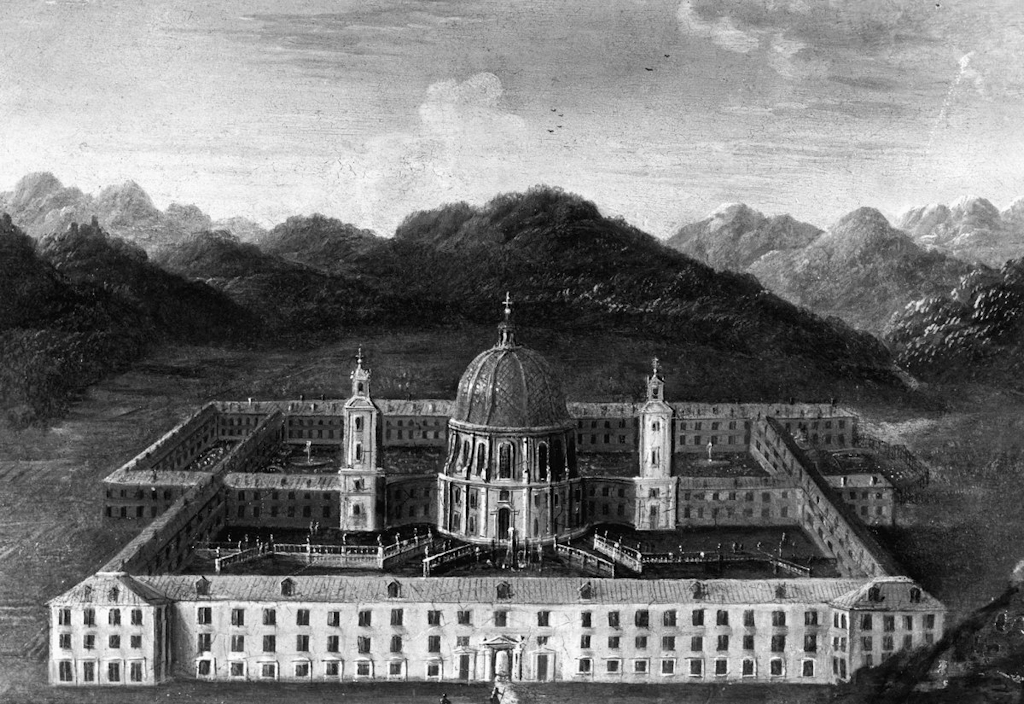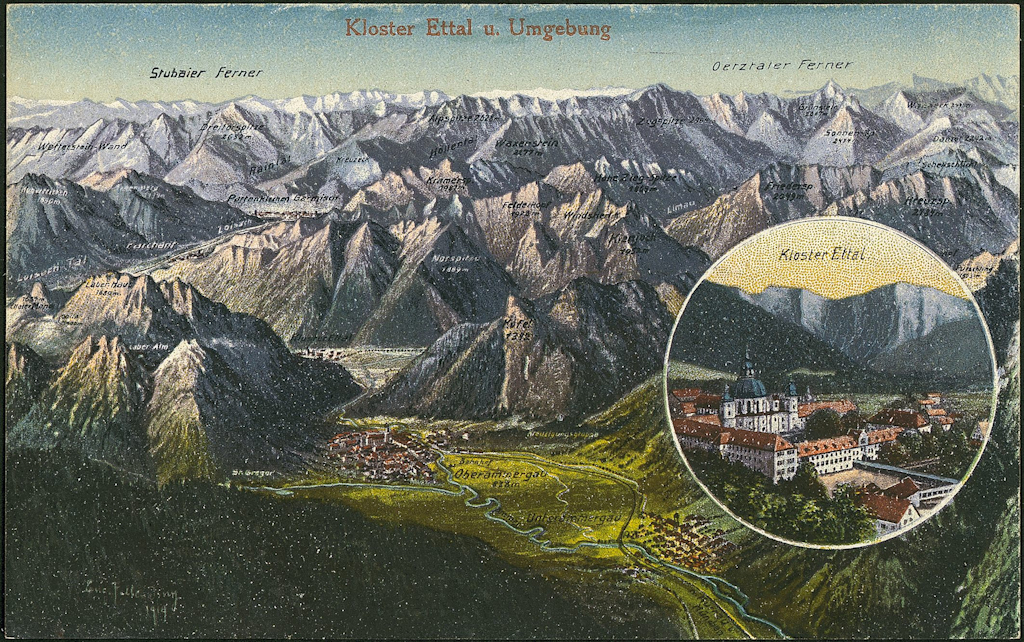The Exhibition Venue: The “Myth of Bavaria” Up Close
Our exhibition venue, the Benedictine abbey of Ettal at the entrance to the Graswang Valley, is both old and young. It has been in existence ─ with interruptions ─ for nearly 690 years. Its cornerstone was laid in 1330 at the command of Emperor Ludwig the Bavarian. Political, economic and religious reasons induced the emperor to found it. He intended to use Ettal Abbey to mark the southern border of the Duchy of Bavaria, to promote trade with Italy from Augsburg over the Alps, and, finally, to demonstrate his orthodoxy as well.
The legend of the abbey’s founding tells another story: The emperor’s horse genuflected three times in the wild forest of Ampferang. This is how the emperor found the foretold site to find the abbey. He had brought a miraculous image, the Ettal Madonna, with him from Pisa. It is still venerated and has survived all of the abbey’s vicissitudes.
The first abbey church was consecrated in 1370. The present Baroque abbey complex was built following plans of Munich court architect Enrico Zucalli. Church, abbey and library were rebuilt after a fire in 1744.
Ettal Abbey was also dissolved during the secularization of 1803. It was only re-founded 100 years later. This time, it ran a secondary school, too.
The Bavarian State Exhibition is being shown on around 1500 m2 in the south wing of the abbey. What is more, the abbey garden, previously closed to the public, has been resurrected just for this. Benches, an herb garden and an Alpine garden are enticements to linger. You can immerse yourself in King Ludwig II’s dreams and fantasies there in a pavilion built specially for the state exhibition.
Ettal Abbey and the Bavarian State Exhibition: Experience the Myth of Bavaria Up Close



